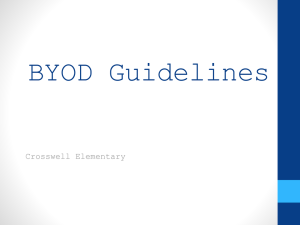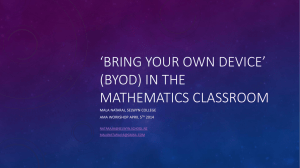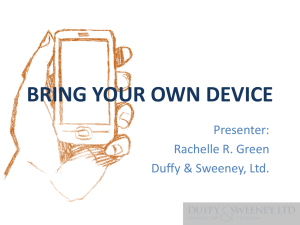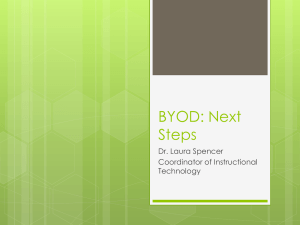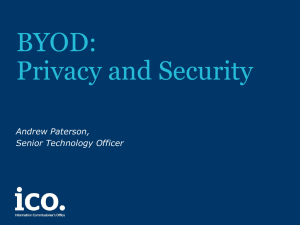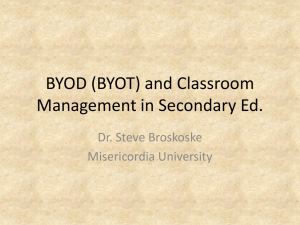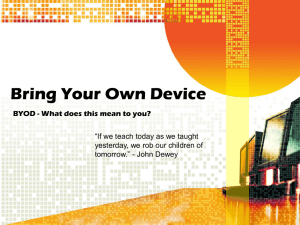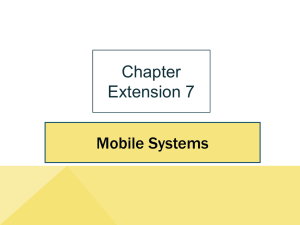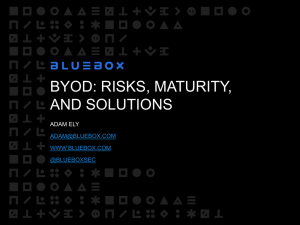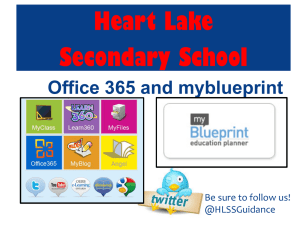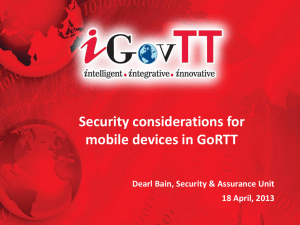BYOD - Cobb County School District
advertisement
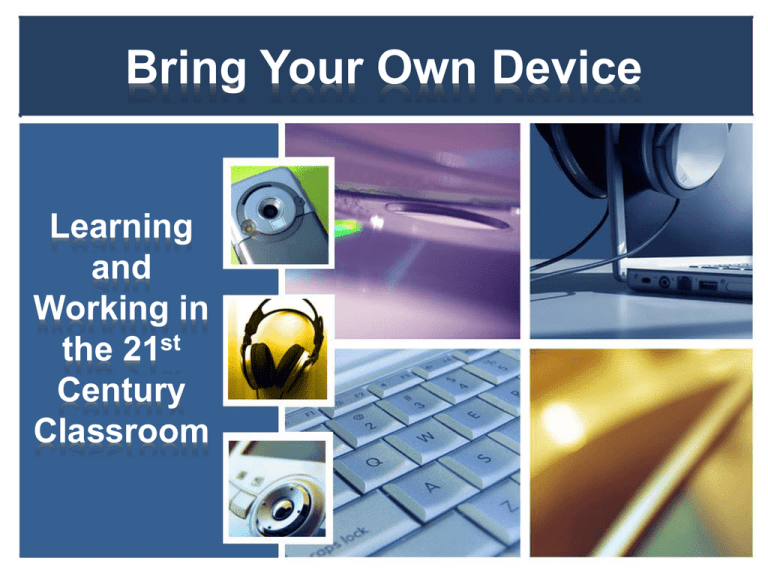
Bring Your Own Device Learning and Working in the 21st Century Classroom Which Words Best Describe Today’s Students? Today’s Students Are… • digital natives • live in a multimedia world • only know media in all color • prioritize visual learning • demand creativity • learn best through trial and error • constantly connect and collaborate • access information that is live and linked What should learning look like in the 21st century? st 21 Century Learning is… • MOBILE Students live in a world with anytime, anywhere access to information at their fingertips. st 21 Century Learning is… • COLLABORATIVE Technology has provided our students with a social, collaborative world. They thrive on teamwork and figuring things out with their friends. st 21 Century Learning is… • CONNECTED Today’s students want to connect with others in real time through social media and mobile devices. st 21 Century Learning is… • MULTIMEDIA DRIVEN T Today’s students are equal parts consumer and creator. They download and view audio and video, then create their own to upload and share with others. They are used to having multimedia tools at their fingertips, and they are adept at using these tools to express their creativity. st 21 Century Learning is… • CONSTANTLY CHANGING Constant change requires independent learners with new skills for changing work environments: critical thinking, collaboration, creativity, and communication. st 21 Century Learning is… • New Skills and Literacies Critical Thinking and Problem Solving Collaboration Agility and Adaptability Initiative and Entrepreneurialism Effective Oral and Written Communication Accessing and Analyzing Information Curiosity and Imagination st 21 Century Learning is… • PHYSICAL and VIRTUAL LEARNING SPACES Students live in a world where they can learn anywhere, any time and from anyone. We have a clear vision of 21st century learning, but how do we get there? Bring Your Own Device (BYOD) • BENEFITS Learning anytime, anywhere without schedule or access restrictions Personalized devices Devices are commonly more up-to-date with newer features Allows for immediate application in the classroom Competitive pricing of tablets, smartphones, and laptop computers- BYOD a viable option for many families Replicates a technology-rich environment already common in higher education and business Flexibility- supports different learners with different needs Bring Your Own Device (BYOD) • USES IN THE CLASSROOM Data organization tools Web-based applications for classroom polling and quick tests Audio for podcasting and radio broadcasts Video QR codes Digital storytelling Language learning Probe attachments for measuring data Course companion sites BYOD Educational Impact • More engaged and motivated students • Students are held accountable for their learning, puts them in charge • Encourages continued learning outside of the classroom walls • Personalized; students tap into their individual learning preferences • Helps students identify and master skills that will make them life-long learners • Gives students a preview of how their future workplaces will operate What is the BYOD Program? BYOD is simply a program where students can bring their own personal devices on campus and connect them to the new school district wireless network that allows filtered internet access. What devices can my child use? • • • • • Laptop Smart Phone Tablet E-reader Any internet capable device. Who Can Bring Their Devices to School? If students have a signed Cobb County BYOD Student/Parent agreement on file in the front office and have received their BYOD agenda sticker, then yes, they may bring a device at their own risk and choice. Do Parents Need to PURCHASE a Device? NO What if my Child’s Device is Stolen or Damaged? Students bring personal electronic devices to school at their own risk, just like any other personal items. The school district will NOT be held responsible if any personal electronic (or other personal item) is lost, stolen, damaged, or misplaced. Will a student be at a disadvantage if they don’t have a device? NO! District curriculum remains the same. The district will continue to purchase supplementary textbooks, support materials, computers and software to support student learning. When electronic devices are used to enhance learning in the classroom, students without a personal device will be provided access to an appropriate district-owned device as needed individually, in pairs or as part of a group. What network access will users have on their devices? Students will have access to districtfiltered Internet access only by logging into the CCSD BYOD network. All “chat” and “IM’ing” capabilities have been disabled. Students cannot access Facebook or other social network sites. Students should not use a cellular network (3G, 4G,etc.) while at school. A Final Checklist • Check to see if your teachers are using BYOD. • Get a user agreement from your teacher if they are a BYOD class. • Have a conversation as a family to decide if BYOD is the right for you. • Return your user agreement to your teacher. • Remember that the policy for electronic devices is in place at all times, unless your teacher directs you to take out your device for a learning activity.
